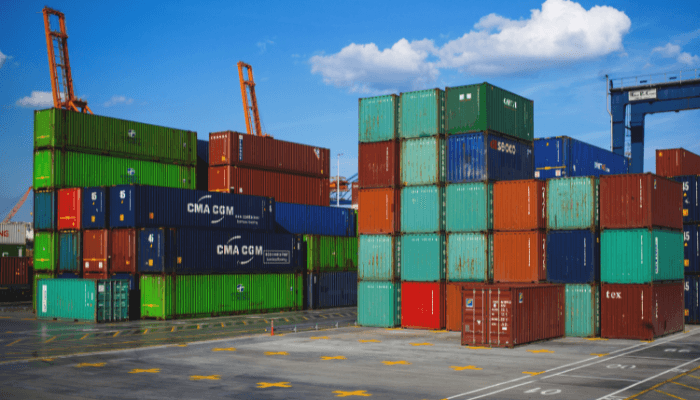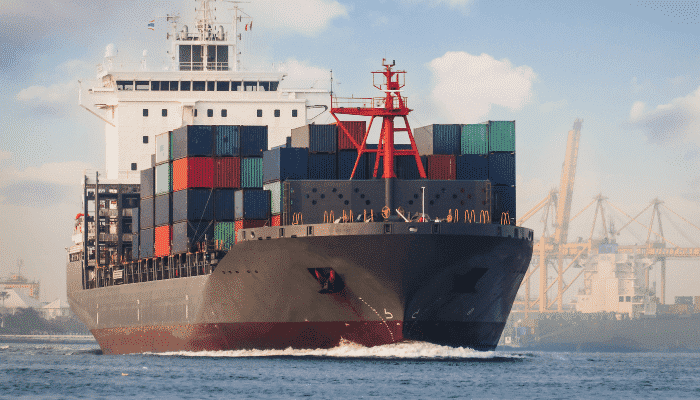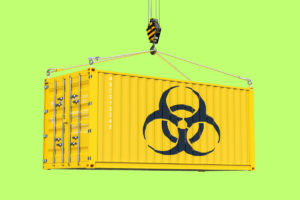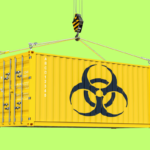Container Freight Rate Index: Overview, Types and Methodology
Indices are very common in the field of economics and international trade and commerce. Indices are used to present a broadly indicative picture of the overall situation prevailing in the specific economic, commercial, social or other aspects that the index purports to measure and track, thus serving as the bell-weather for the state/ robustness of the economy or sector.
While most of us are familiar with indices such as the Wholesale Price Index or the Manufacturing Index which are commonly quoted in popular media, it is less common knowledge that there also exist indices for specific industries and sectors within the global economy, such as ones for shipping and ports. Even within the Shipping and Ports industry, there exist specialized indices catering to sub-segments such as Containers, Bulk, Dry, import/ export, geographical regions/ trade routes etc.
These Shipping Freight Rate Indices endeavour to capture the current market freight rate scenario by tracking and aggregating the historical development in freight rates across various trade lanes or regions or even at the global level, and publishing the data either publicly or on a proprietary basis (available only to their subscribers/ registered users).
Data on freight rates is collected from various primary and secondary sources, ranging from direct participants such as Carriers, Shippers and Freight Forwarders to Government sources and Trade/ Industry associations. The data thus collated is aggregated and presented as the prevailing average/ weighted average rate for the route/ trade/ region being monitored.
Indexed freight rates are monitored and published by various government bodies and private agencies, each of whom focuses on their area of interest or target audience. Examples of the former include the China Containerised Freight Index (CCFI), which monitors exports rates from China and is sponsored by the Chinese Ministry of Transport (though calculated by the Shanghai Shipping Exchange) while the latter category includes indices published by private entities such as Freightos (a digital freight forwarder) and Xeneta (a rate benchmarking and market analytics solutions provider aimed specifically at the shipping and logistics industry).
Some common rate indices cover rates from Shanghai to major ports in North America and North Europe, Ningbo to major ports in North America and North Europe (Port to Port rate indices), China to Europe or North America (Country or Region or Trade lane-specific) and World Index (global).
Given the inherent dissimilarities prevalent in different trade lanes, in terms of volumes, commodities, cargo value, trade flows, equipment imbalance etc, there inevitably exists significant variation in freight rates across trade lanes, ranging from the thousands of dollars quoted for containers transported in the Trans-Pacific routes and other deep-sea trades to a few hundred dollars per TEU that are charged in most intra-regional or short sea trades.
It is therefore that indices capturing data at a relatively granular level are generally more relevant and commonly referred to than global level indices.
Popular Freight Rate Indices
1) Indices published by the Shanghai Shipping Exchange (SSE)
As the second-largest economy globally, the largest exporter and widely acknowledged as the factory of the world, China has an inordinately high degree of exposure to the vagaries of international seaborne trade. Their economic prosperity and rapid rise to the top of the world trade hustings has been propelled by their massive manufacturing output, which helps Chinese goods dominate retail shelves in countries across the world (with the vast majority of its export volumes being transported by sea, as also being home to 7 of the world’s 10 largest container ports).
Cognisant of this fact, the Chinese government has focused extensively on tracking the movement of freight rates, at various levels, ranging from exports or imports, cargo type, port corridors or regions. These include indices published for overall China Container trade, Shanghai Container trade, Coastal bulk, Coastal bulk coal, Dry bulk imports and regions such as Far East Asia and Taiwan.
Amongst the more prominent indices published by the SSE are:
CCFI (China Containerised Freight Index) – started in 1998, the index tracks container freight rates from 10 major ports in China (Dalian, Tianjin, Qingdao, Shanghai, Nanjing, Ningbo, Xiamen, Fuzhou, Shenzhen and Guangzhou) to 12 major trades, covering the biggest markets in the Far East, Asia, Europe, Mediterranean, Australasia, North and South America, Africa and the Middle East.
The data is published on a weekly basis, every Friday.
SCFI (Shanghai Containerised Freight Index) – By virtue of its long held position as the worlds biggest port, Shanghai occupies a pivotal place in the international container market, therefore justifying the development of a dedicated freight rate index, capturing rate developments for exports from Shanghai to base ports in all major trading regions. Instituted in 2009, the SCFI has rapidly gained in prominence – in tandem with Shanghai’s rise as the world’s largest container port – to today being one of the most frequently quoted indices whenever the topic of the current overheated container freight market is under discussion.
China Import Containerized Freight Index (referred to as CICFI) – as the export-driven boom led to rising prosperity levels in China, the middle class with their higher disposable incomes and aspirational lifestyle started consuming more foreign goods, causing a surge in imports of various goods and commodities. The increasing level of imports prompted the development of the CICFI to monitor freight rates for Chinese imports in 2015 (with 2014 as the base period).
As with the CCFI, the CICFI also covers the 10 major ports in China, tracking imports hereto from 5 routes (US West Coast, US East Coast, Europe, Mediterranean and Australasia).
2) FBX Freightos Index
Freightos, a rapidly growing digital freight forwarder which positions itself as an industry disruptor, has partnered with the Baltic Exchange to develop the Freightos Baltic Index, which monitors rates for 40’ containers (FEUs). Considering that 40’ containers are the most commonly used container type, comprising approximately 60% of the global container fleet, the FEU rate index can be considered fairly representative of the overall market.
The index sources freight rates from the users of Freightos’ freight rate management tool.
Data is obtained from all entities involved in ocean transport (Carriers, Forwarders and Cargo Exporters) and covers a multitude of major trade lanes to/ from China and other East Asian countries, North and South America, Europe and the Mediterranean.
Freightos publishes a daily index and also aggregates the daily data to publish a weekly index.
In contrast to the SCFI and CCFI which are primarily focused on the China trade, Freightos incorporates other major ports and trading regions as well.
3) World Container Index
The World Container Index is an index developed by Drewry, one of the most reputed research, advisory and consulting service providers for the shipping and maritime industry. Drawing upon its expertise and accumulated data, Drewry publishes the WCI, covering the Spot market freight rates on a weekly basis.
The index tracks and publishes on a weekly basis, indexed rates across major head haul corridors and backhaul legs, including Shanghai-Rotterdam, Rotterdam-Shanghai, Shanghai-Genoa, Shanghai-Los Angeles, Los Angeles-Shanghai, Shanghai-New York, New York-Rotterdam, Rotterdam-New York, besides also publishing a composite indexed value.
4) Xeneta Shipping Index
Xeneta is a new-age provider of ocean and air freight rate benchmarking and market intelligence services. Xeneta tracks both imports and exports for North America, Europe and Far East Asia, for the long term and spot rate markets.
Relying on crowdsourced data, Xeneta has in its database both contractual and spot market rates that have been quoted by Carriers to a vast number of actual customers.
5) S&P Global Platts / Platts Container Rates (PCRs)
S&P Global Platts is a reputed provider of bunker prices and related information for the shipping industry (besides other commodities).
They use historical freight rate data to calculate and publish benchmark rates, which serve as an index for market participants to refer to while negotiating long term contract rates or making cargo bookings on short term spot market rates.
The index rates are published daily, for both head haul and backhaul corridors, on an FEU or TEU basis.
Methodology
Depending on the data available for the trade or route that is being tracked, the index settles upon a base year (generally around the early or pre 2010’s) which is assigned a base index value of 1,000 points. Changes to the rates in the succeeding periods are tracked and indexed over the base, to facilitate a historical comparison and provide the contextual background, thus enabling users to gauge in real terms the extent of price movements.
Simultaneously, important or target trade lanes are selected.
The publisher then decides on how data will be collected and the sources, therefore. The usual practice is for the publisher to decide whether to publish rates obtained from Carriers directly or from freight forwarders (who will usually have a markup upon the rates that the forwarder has procured from the Carrier ) or Cargo Owners/ Exporters (who will get rates depending on their volumes and regularity of flows).
Data could be collated from either a single source or any combination thereof. To increase the acceptability and authenticity of the index, publishers prefer to rely on reputed and global players, who have a sizeable presence on the trade lanes being tracked and hence can be relied upon to provide accurate and representative information on rates.
The indexed rates and related information are then published as per the pre-decided schedule.
You might also like to read:
- Lesser Known Surcharges in Container Shipping
- What Are Common Freight Surcharges and Accessorial Fees in Container Shipping?
- Causes and Consequences Of Vessel Delays in Container Shipping
- Watch: How Container Shipping Works: The Process Of Transporting Cargo In Containers
- 10 Largest Container Shipping Companies in the World in 2022
Disclaimer: The authors’ views expressed in this article do not necessarily reflect the views of Marine Insight. Data and charts, if used, in the article have been sourced from available information and have not been authenticated by any statutory authority. The author and Marine Insight do not claim it to be accurate nor accept any responsibility for the same. The views constitute only the opinions and do not constitute any guidelines or recommendation on any course of action to be followed by the reader.
The article or images cannot be reproduced, copied, shared or used in any form without the permission of the author and Marine Insight.
Do you have info to share with us ? Suggest a correction

About Author
Jitendra has over 20 years of international experience in the Container Shipping, Ports and Logistics industry, spanning 3 diverse geographies, wherein he has been involved in the commercial and strategic aspects of the container business.
Latest Maritime law Articles You Would Like:
Latest News
- What are Logistics Risks?
- How Port and Terminal Operators Can Control Emissions?
- Minimum Quantity Commitment (MQC) and Liquidated Damages in Container Shipping: Concept and Relevance
- MARPOL (The International Convention for Prevention of Marine Pollution For Ships): The Ultimate Guide
- The Ultimate Shipping Container Dimensions Guide
- A Comprehensive Overview of IMDG Code for Shipping Dangerous Goods
Subscribe To Our Newsletters
By subscribing, you agree to our Privacy Policy and may receive occasional deal communications; you can unsubscribe anytime.
Web Stories






















